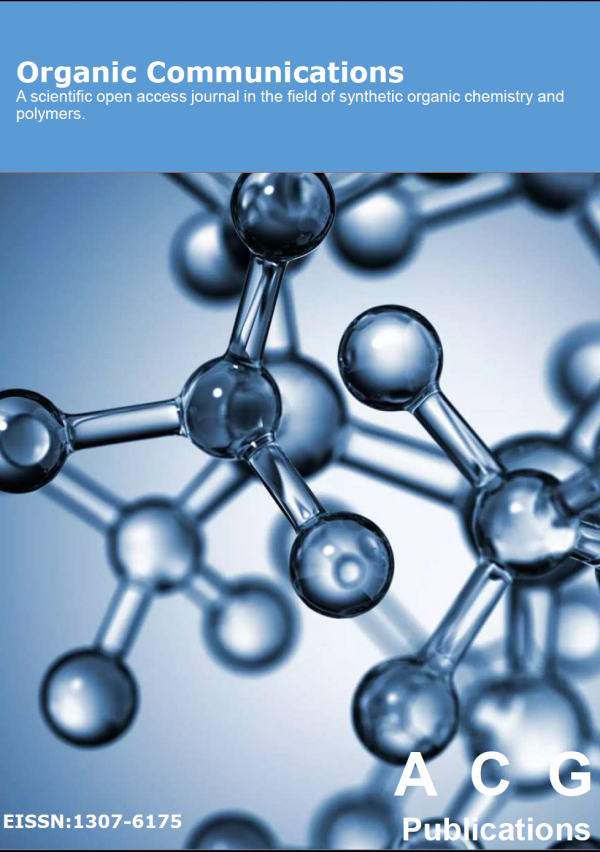Organic Communications
Year: 2010 Volume: 3 Issue:4 October-December
1) Catalytic transfer-hydrogenations of olefins in glycerol
Glycerol has been successfully employed as a green solvent and hydrogen donor in the biphasic catalytic transfer-hydrogenation of olefins over Pd/C to yield the corresponding paraffins and dihydroxyacetone, respectively. The use of glycerol eased product separation and catalyst recycling and allowed for microwave-assisted reactions.
Keywords Glycerol catalysis transfer-hydrogenation green chemistry DETAILS PDF OF ARTICLE © 2010 ACG Publications. All rights reserved.2) Condensation of 3-Aza-1, 5-Diketones with N-Nucleophiles
The reaction of substituted diphenacyl anilines with ammonium acetate under microwave irradiation afforded 1,3,5-triaryl-1,2-dihydropyrazines. In the present paper the use of microwave irradiation allows to improve the yields and expedite the reaction. Phenylhydrazine is used as nitrogen nucleophile. The reaction pathways of prepared compounds are discussed in detail in this paper.
Keywords Diphenacyl anilines nucleophiles dihydropyrazines ammonium acetate phenylhydrazine DETAILS PDF OF ARTICLE © 2010 ACG Publications. All rights reserved.3) Ring expansions using Baeyer-Villager oxidation: An efficient strategy for the construction of substituted AB-ring systems
An approach to the synthesis of regioselective cis fused substituted AB-ring systems is described. The key step involves a thermal cycloaddition to substituted cyclobutanones. The resulting cyclobutanones were subjected to regioselective Baeyer-Villager oxidation protocol.
Keywords Bicyclic lactones thermal cyclcoaddition cyclobutanone Baeyer-Villager oxidation DETAILS PDF OF ARTICLE © 2010 ACG Publications. All rights reserved.4) Oxidation reaction of 1,1’-bis(o-substituted phenyl)ferrocenes
The oxidation reactivity of 1,1’-bis(o-substituted phenyl)ferrocenes was measured. For acetyl- and methoxycarbonyl derivatives, the accelerating effect found for mono substituted derivatives disappeared. This was accounted for by a proton transfer between the two carbonyl oxygens.
Keywords Ferrocene derivatives oxidation reaction intramolecular interaction. DETAILS PDF OF ARTICLE © 2010 ACG Publications. All rights reserved.5) Synthesis and antibacterial activity studies of novel 2-substituted-1,3,2-oxazaphosphole-2-oxide derivatives of (S)-(+)-prolinol
The novel 2-substituted-1,3,2-oxazaphosphole-2-oxides of (S)-(+)-prolinol were synthesized by the cyclization of (S)-(+)-prolinol (3) with phosphorusoxychloride (4) followed by the treatment with various phenolic compounds, aminoacid esters and amine (6a-l) to obtain the title compounds (7a-l). Their structures are characterized by spectral, elemental analyses and evaluated their in vitro antibacterial activity against two gram positive and two gram negative bacteria. Three compounds exhibited very significant anti bacterial activity when compared with that of Ciprofloxacin.
Keywords L–Prolinol phosphorus oxychloride 1 3 2-oxazaposphole-2-oxides antibacterial activity DETAILS PDF OF ARTICLE © 2010 ACG Publications. All rights reserved.